After twenty-six episodes and six plot-arcs, Higurashi no Naku Koro ni has wound down its anime run, but what do we leave it with? In an industry chock-full of sub-genres, such as macho fighting anime, harem romantic comedy anime, brooding emo anime, silly slapstick comedy, giant robots, war stories, and so forth, this title fit into to no category neatly.
This final plot arc, the Tsumihoroboshi-hen or Atonement Chapter, reveals a great deal, but leaves a lot of rather fundamental questions unanswered. This was anything but a clean break, with all the loose ends neatly tied off for us. Unlike the Eye Opening Chapter that immediately preceded it, this “answer arc” does not re-tell a prior plot arc, but turns it on its head.
In the first four episodes of Higurashi no Naku Koro ni, we see Maebara Keiichi descend through a spiral of doubt and fear, culminating in a homicidal paranoia. In the last five, we see a similar series of events revolving around Ryuugu Rena instead.
The Atonement Chapter is all about trust. The trust that Rena had in her parents, the trust that her father had for his girlfriend, the trust that Keiichi, Mion, Rika, Satoko, and Rena shared amongst themselves. We see each of these, to varying degrees, disintegrate for Rena. Unable to rely upon her friends, she disassociates with reality, eventually going so far as to hold her school hostage with a gasoline bomb.
We find, during all of this, that Hinamizawa has been stuck in what could be described as a time-loop. Think of Groundhog’s Day but covering an entire summer instead of a single day, with an inevitable cycle of tragedy holding it together rather than some quest for self-enlightenment.
Unlike previous plot-arcs, Keiichi seems to find the courage to do the right thing. Instead of lashing out, running away, or panicking, he rises to the occasion and tries to save his friends. All of them.
The big showdown that ensues is a great example of how Higurashi no Naku Koro ni has worked from the beginning:
- Take some interesting characters
- put them into a very interesting situation
- manipulate the audience’s access to the main character’s state of mind
- manipulate the audience’s access to the main character’s past
- deny the audience a reliable PoV through the use of severe disassociative dementia
- animate the whole thing with wildly-varying quality
- miraculously make it all work
Overall Impression
Higurashi no Naku Koro ni was an extremely interesting and somewhat flawed series. There were some interesting choices made regarding pacing (many have criticized it for this), and the execution on the actual art was spotty throughout. I got the impression at times that the director was under entirely too much pressure to meet deadlines with an insufficient budget, or that entire scenes were handled from beginning to end by interns instead of experienced professionals. Folks who read the visual novel this was based on complain that too much is left out. From what I’ve seen, most of that consists of slapstick and a certain rather detestable form of fanservice that doesn’t seem to contribute greatly to the plot.
These shortcomings, however, are more than made up for by the story itself. This is not a story that assumes the viewer has a fifth-grade intellect or a peripubescent libido. Higurashi no Naku Koro ni respects you more than that. It tells a complicated story with a lot of moving parts, a lot of nuance, and leaves a lot of room for the viewer to fill in the blanks. Were it better-produced, I’d give it an A, but in the end it will have to settle for a B+. I recommend it highly to anybody that enjoys puzzles.

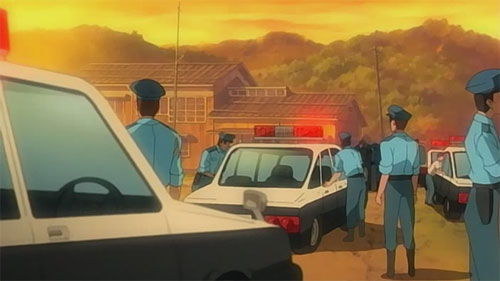
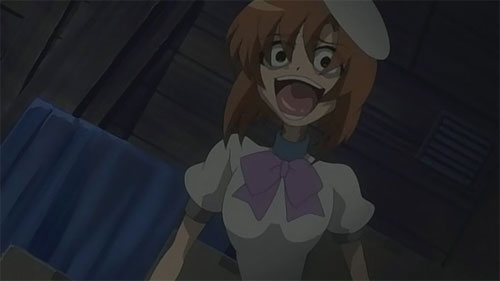
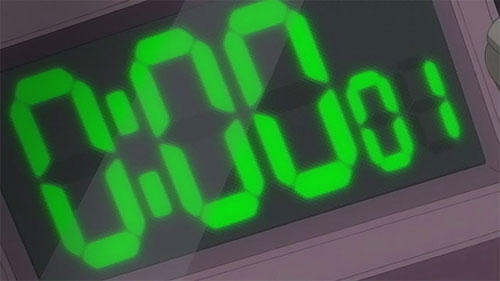
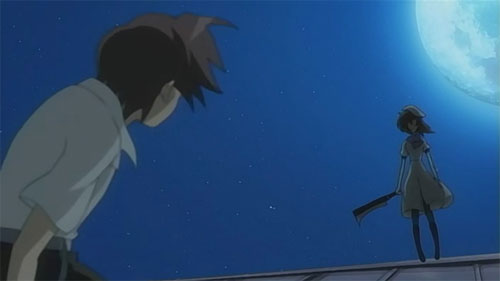
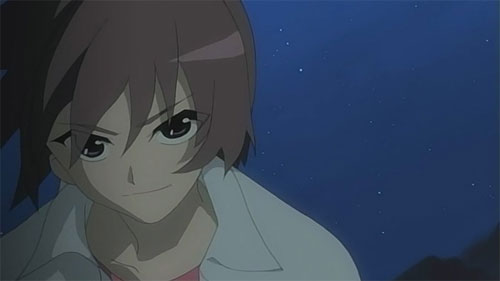
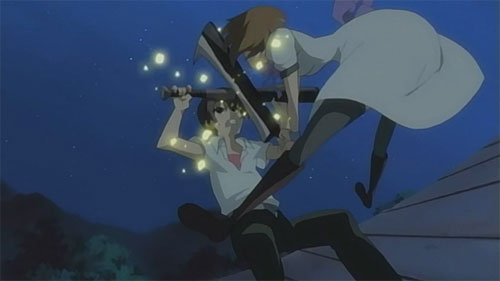
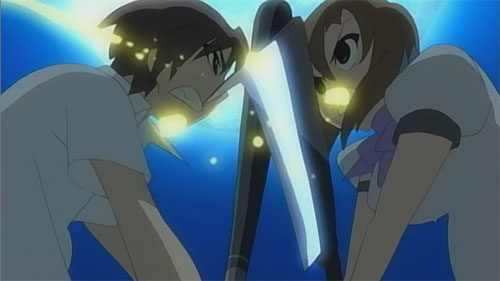
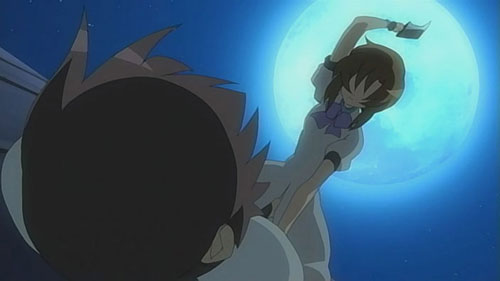
Might I suggest Higurashi no Naku Koro ni Kai? Any questions you have will be answered in that arc. 😉
Oh, I tried the sequel, and found it severely wanting. Having a plot arc where the PoV character is “in on it” was terrible. Imagine if you were to watch a murder mystery but the opening scene shows you the detective watching the crime happen. Now you’re not really watching a mystery any more, are you?